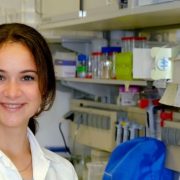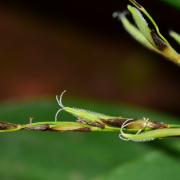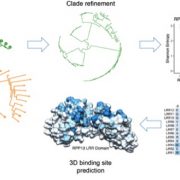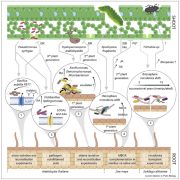
Recognizing Plant Direct author Cui Wu
Plant Direct: Author Profiles
Cui Wu, first author of Gender Discrimination of Populus tomentosa Barks by HPLC Fingerprint Combined with Multivariate Statistics
Current Position: Doctor candidate, China Academy of Chinese Medical Sciences
Education: B.S. (2015), Liaoning University of Traditional Chinese Medicine; M Med (2018),…

Recognizing The Plant Cell author Henryk Straube
The Plant Cell: Author Profiles
Henryk Straube, first author of Enhanced nucleotide analysis enables the quantification of deoxynucleotides in plants revealing connections between nucleoside and deoxynucleoside metabolism
Current Position: PhD student, Department of Molecular Nutrition and Biochemistry of Plants, Institute of…

Recognizing Plant Physiology author Sarah Mielke
Plant Physiology: Author Profiles
Sarah Mielke, co-first author of Functional characterization of proton antiport regulation in the thylakoid membrane
Current Position: Scientist, Max Planck Institute of Molecular Plant Physiology, Germany
Education: B.Sc. in Life Sciences and M.Sc. in Biochemistry and Molecular Biology at the…

Recognizing Plant Physiology author Michał Uflewski
Plant Physiology: Author Profiles
Michał Uflewski, co-first author of Functional characterization of proton antiport regulation in the thylakoid membrane
Education: B.Sc. in Biotechnology and M.Sc. in Biotechnology and Molecular Biology at the Wrocław University
Current position: PhD student, Max Planck Institute of Molecular…

Pharus genome provides insights into grass evolution
The Plant Cell: In a NutshellMa et al. provide numerous insights into how whole-genome duplication contributed to the origin and diversification of the grass family.
By Peng-Fei Ma, Yun-Long Liu and De-Zhu Li
(Kunming Institute of Botany, CAS)
Background: Whole genome duplication (WGD), which may result from an organism…

Recognizing Plant Physiology author S. Lori Tausta
Plant Physiology: Author Profiles
Lori Tausta, first author of The fluoride transporter FLUORIDE EXPORTER (FEX) is the major mechanism of tolerance to fluoride toxicity in plants
Current position: Associate Research Scientist, Department of Molecular Biophysics and Biochemistry, Yale University
Education: B.A. Biochemistry Mount…

Highly Diverse Plant Immune Receptors Form a Species-wide Reservoir of New Recognition Specificities
The Plant Cell: In a NutshellPrigozhin and Krasileva identify highly variable NLR subfamilies responsible for the generation of new immune receptor specificities. The Plant Cell (2021)
By Daniil M. Prigozhin1 and Ksenia V. Krasileva2
1Lawrence Berkeley National Laboratory
2University of California Berkeley
Background:…

Review: Microbiota-root-shoot-environment axis and stress tolerance in plants ($) (COPB)
Plant Science Research WeeklyRoots and shoots exist in different environments and have different functions, but each depends on the actions of the other. In recent years, many factors have been identified that move from root to shoot or vice versa to integrate their actions; these include hormones, small RNAs, peptides, and transcription…

Phytochrome regulates cellular response plasticity and the basic molecular machinery of leaf development (Plant Physiol)
Plant Science Research WeeklyThe effects of light on plant growth are incredibly complex and depend on where it is perceived, light quantity, light quality (wavelength), and when within the circadian cycle it is perceived. Romanowski et al. examined the effect of late-day far-red light perception in Arabidopsis leaves. This treatment…

